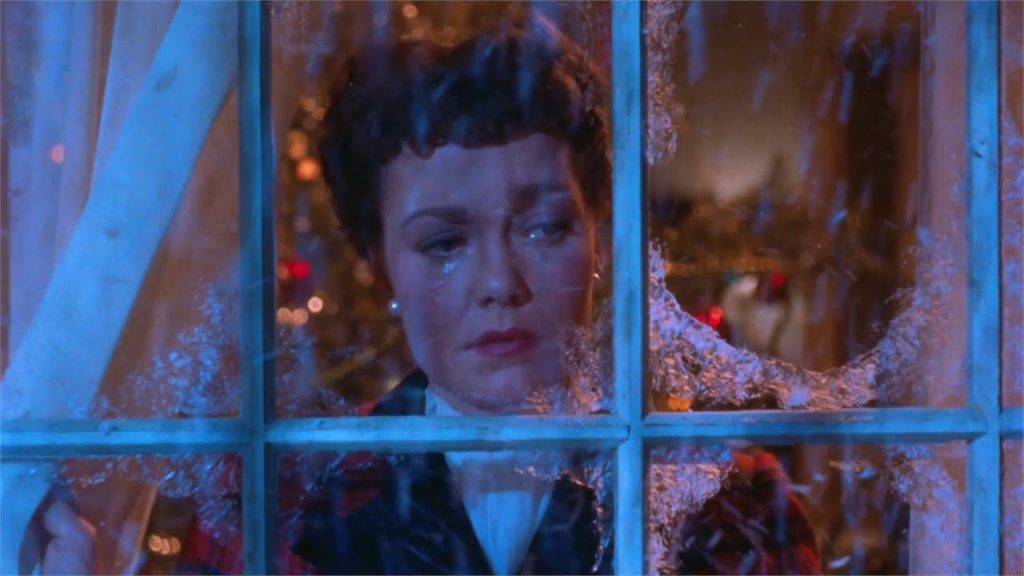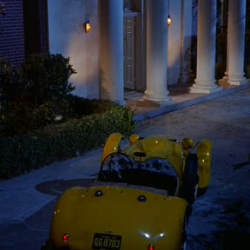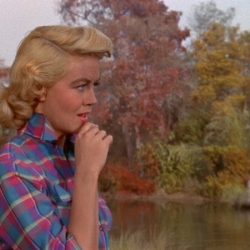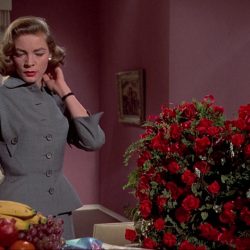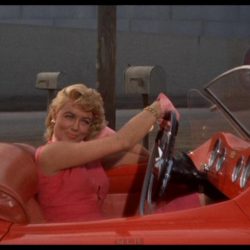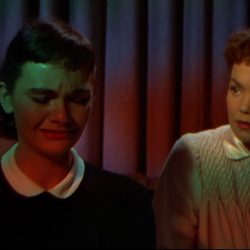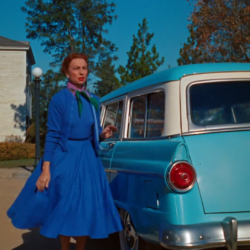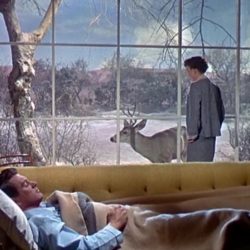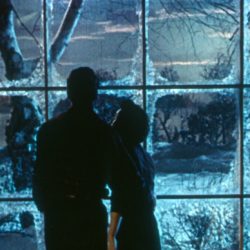The flamboyance of Douglas Sirk
06.18.2018Douglas Sirk’s flamboyant Fifties melodramas signalled the dawn of a new Hollywood genre. The artificial and saturated explosion of colour on screen overloaded the eye. But this eye-popping aesthetic touch was bursting with signs. The shades of colour added to the storyline.
Of the dozen or so films that Sirk directed between 1954 and 1959, five technicolour melodramas (Magnificent Obsession, All that Heaven Allows, Written on the Wind, A Time to Love and a Time to Die, and Imitation of Life) were in collaboration with Russel Metty who sometimes assisted with photographic direction in technicolor and Eastmancolor for a dazzling tonal and atmospheric colour palette.
When it came toe Written on the Wind, Douglas Sirk explained his use of deep-focus lenses by saying that they gave a certain harshness to the colour of objects that mirrored the inner violence of the characters. He pointed out the extent to which style and technique are intertwined with the theme of the film (interviews with Thomas Elsaesse in 1972). The colour coding used by Douglas Sirk may not skirt certain cliches – like Marylee Hadley’s red car and crimson red dress indicating her passionate nature and tendency towards nymphomania (Writtten on the Wind) but it also has great psychological impact that sheds light on areas of uncertainty: in All that Heaven Allows the bright autumnal colours that shine through in the first part of the story express via colour the notion of concord between the different lives of young gardener Rock Hudson living in non-conformance with the narrow minded society in which older middle-class widow Jane Wyman also lives. The dominance of the colour blue during the winter scenes in the second part of the film – which does not correspond to the real duration of winter (as several years go by) turns out to be a « metonymy of winter » evoking « the slow and protracted duration of time negotiated by the two characters » as film historian Jean-Loup Bourget says. The latter held a conference on the versatile use of the colour blue by Douglas Sirk, sometimes soothing and moral, sometimes disturbing and duplicitous.
Each shot in these grand melodramas, their overall tone and elements including clothing, could be the subject of deep analysis. Initially a film director, Douglas Sirk was a fine colourist who was able to take full advantage of the palette of colour intensity provided by the tricolor, especially Technicolor which required the filmmaker to have a technician on set, often the cameraman.
Technicolor came with recommendations, such as chosing light that corresponded to the feelings of a character, something that Sirk used to great effect. Hence the colourful rainbow used during a row between mother and daughter in All that Heaven Allows, nodding to the differences of opinion and the heroine’s muddled state, not knowing what to do. But he also went against recommendations by, for example, using a particular blue shade to link the main character and the interior decor to express his subjection to his environment.
This cinema of excess, with aggressive colour and sentiment, might seem too lurid and gaudy to be profound when actually it is a work of art that puts artifice at the service of truth, unlike naturalistic realism. So Sirk’s films were described as both abstract expressionism and fantastic realism. « With Sirk, the individual’s character is revealed by a resorption process in appearance, and the truth is exposed in the intensification of the simulacrum. It is by summoning all the power of the artificial that his films get to the truth. Whether it is the interior decor, the composition of the frame, the lighting or the slightest placement of the camera, each element is an extremely stylised and sometimes misunderstood move, as was the case in Magnificent Obsession, when work to intensify the visual and dramatic parameters bordered on abstraction. » (Youri Deschamps)
Sirk regretted not having been able to film in colour two great melodramas during this highly successful period (There’s Always Tomorrow and The Tarnished Angels) due to a lack of funds. These techniques were expensive back in the day and reserved for films that were guaranteed to be box office hits.
A European scholar who spoke several languages and an accomplished aesthete, Douglas Sirk first studied art under the great historian and art theoretician Erwin Panovsky before considering a career as an artist. His films felt the effects. R.W. Fassbinder found the aesthetic key to his own filmmaking (although very different) as a result of this expressive and symbolic use of all the elements in a shot, starting with colour. Each of Sirk’s shots is primarily a painting, the warm beauty of which delights the eye before the bouquet of colours speaks plainly to the mind.
- Written on the Wind
- Written on the Wind (Dorothy Malone)
- Written on the Wind (Lauren Bacalll)
- Written on the Wind (Dorothy Malone)
- All that Heaven allows (Gloria Talbott & Jane Wyman)
- All that Heaven allows
- All that Heaven allows (Rock Hudson & Jane Wyman)
- All that Heaven allows (Rock Hudson & Jane Wyman)


